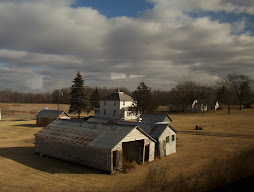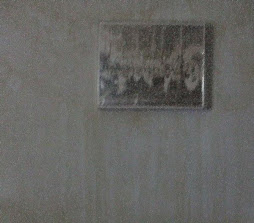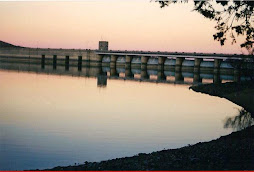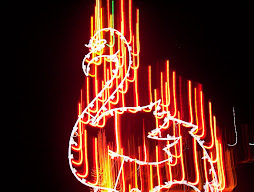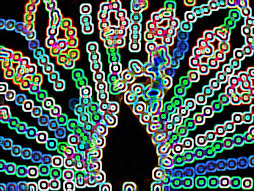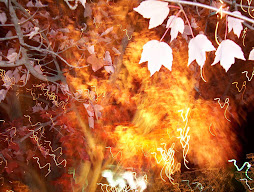IAEA whitewashes worst nuclear disaster since Chernobyl World Socialist Web Site. Excerpts:
On June 1, the International Atomic Energy Agency (IAEA) issued a preliminary report on the Fukushima nuclear disaster. The report is a whitewash, exonerating the Tokyo Electrical Power Company (TEPCO) and the Japanese government of blame. Its bland language is an attempt to suppress discussion and protect the nuclear industry from scrutiny.
The report comes as two more workers at the plant were found to have exceeded maximum doses of radiation. Two male workers, one in his 30s and the other in his 40s, have been exposed to more than the 250 millisieverts level legally allowed for nuclear workers in Japan. The government raised the limit from its previous level of 100 millisieverts after the disaster. Exposure to more than 100 millisieverts of radiation is thought to increase the lifetime risk of developing cancers.
The two men involved in the most recent incident both worked in the control rooms of reactor 3 and reactor 4. They had not been working in the flooded tunnels. Their exposure to radiation points to high levels of contamination throughout the facility. They were subject to internal exposure as a result of breathing or ingesting contaminated material. The site is covered in radioactive dust. Many workers have been sleeping on site and taking their meals in potentially contaminated areas; few of them have protective clothing. It is doubtful that many of the contract workers on site have been warned of the risks.
Workers enter Japan reactor for first time since blast
Japanese workers have entered the No.1 reactor building at the crippled Fukushima Daiichi nuclear plant for the first time since a hydrogen explosion ripped off its roof a day after a devastating March 11 earthquake and tsunami.
High radiation levels inside the building have prevented staff from entering to start installing a new cooling system to finally bring the plant under control, a process plant operator Tokyo Electric Power (TEPCO) has said may take all year.
..
Two TEPCO staff and 10 contractors with protective suits, masks and air tanks worked for 1-1/2 hours, moving in and out in small groups to connect duct pipes to ventilators that will filter out 95 per cent of the radioactive material in the air, a company spokesman said.
And:
Under Japanese law, nuclear plant workers cannot be exposed to more than 100 millisieverts over five years, but to cope with the Fukushima crisis, the Health Ministry raised the legal limit on March 15 to 250 millisieverts in an emergency.
Japan nuclear plant gets radioactive water tanks
Ombudsman slams secrecy over Fukushima contamination Via Rense. Excerpts:
Following complaints from citizens, the European Ombudsman has opened an investigation into the EU's permitted levels of food contamination following the Fukushima nuclear accident in Japan and their communication to the wider public. Similar complaints are also being heard in France.
"Based on complaints submitted to me, it appears that a number of Union citizens perceive a lack of precise and reliable information as regards the changes made to the maximum permitted levels in the aftermath of the Fukushima accident," wrote EU Ombudsman P. Nikiforos Diamandouros in a letter addressed to European Commission President José Manuel Barroso on 19 May.
And:
Last week (25 May), a French NGO specialised in measuring radioactivity, CRIIRAD, asked the French government to investigate what it described as "serious failures" in measuring the impact of the Fukushima nuclear accident in France and communicating the results to the public.
According to the NGO, the radioactive cloud from the stricken reactors at Japan's Fukushima nuclear power plant reached France two days earlier than officially announced. In addition, the levels of radioactive iodine-131 were 20 times higher on 22 March than announced on 24 March, according to the NGO's findings.
Japan: green tea exports banned due to high radiation levels Via Rense.
The Japanese government has banned shipments of green tea leaves in four regions after high levels of radioactive caesium were found.
A swathe of Japan's tea making regions including parts of Tochigi, Chiba and Kanagawa prefecture as well as the whole of Ibaraki were included within the ban, according to the Ministry of Health, Labour and Welfare.
Green tea plantations were first highlighted as suffering from potential radiation contamination last month following the results of sample tests in Kanagawa prefecture.
The authorities discovered around 570 becquerels of caesium per kilogram in leaves grown in the city of Minamiashigara – compared to the legal limit of 500 – and started a recall of tea products.
On June 1, the International Atomic Energy Agency (IAEA) issued a preliminary report on the Fukushima nuclear disaster. The report is a whitewash, exonerating the Tokyo Electrical Power Company (TEPCO) and the Japanese government of blame. Its bland language is an attempt to suppress discussion and protect the nuclear industry from scrutiny.
The report comes as two more workers at the plant were found to have exceeded maximum doses of radiation. Two male workers, one in his 30s and the other in his 40s, have been exposed to more than the 250 millisieverts level legally allowed for nuclear workers in Japan. The government raised the limit from its previous level of 100 millisieverts after the disaster. Exposure to more than 100 millisieverts of radiation is thought to increase the lifetime risk of developing cancers.
The two men involved in the most recent incident both worked in the control rooms of reactor 3 and reactor 4. They had not been working in the flooded tunnels. Their exposure to radiation points to high levels of contamination throughout the facility. They were subject to internal exposure as a result of breathing or ingesting contaminated material. The site is covered in radioactive dust. Many workers have been sleeping on site and taking their meals in potentially contaminated areas; few of them have protective clothing. It is doubtful that many of the contract workers on site have been warned of the risks.
Workers enter Japan reactor for first time since blast
Japanese workers have entered the No.1 reactor building at the crippled Fukushima Daiichi nuclear plant for the first time since a hydrogen explosion ripped off its roof a day after a devastating March 11 earthquake and tsunami.
High radiation levels inside the building have prevented staff from entering to start installing a new cooling system to finally bring the plant under control, a process plant operator Tokyo Electric Power (TEPCO) has said may take all year.
..
Two TEPCO staff and 10 contractors with protective suits, masks and air tanks worked for 1-1/2 hours, moving in and out in small groups to connect duct pipes to ventilators that will filter out 95 per cent of the radioactive material in the air, a company spokesman said.
And:
Under Japanese law, nuclear plant workers cannot be exposed to more than 100 millisieverts over five years, but to cope with the Fukushima crisis, the Health Ministry raised the legal limit on March 15 to 250 millisieverts in an emergency.
Japan nuclear plant gets radioactive water tanks
Ombudsman slams secrecy over Fukushima contamination Via Rense. Excerpts:
Following complaints from citizens, the European Ombudsman has opened an investigation into the EU's permitted levels of food contamination following the Fukushima nuclear accident in Japan and their communication to the wider public. Similar complaints are also being heard in France.
"Based on complaints submitted to me, it appears that a number of Union citizens perceive a lack of precise and reliable information as regards the changes made to the maximum permitted levels in the aftermath of the Fukushima accident," wrote EU Ombudsman P. Nikiforos Diamandouros in a letter addressed to European Commission President José Manuel Barroso on 19 May.
And:
Last week (25 May), a French NGO specialised in measuring radioactivity, CRIIRAD, asked the French government to investigate what it described as "serious failures" in measuring the impact of the Fukushima nuclear accident in France and communicating the results to the public.
According to the NGO, the radioactive cloud from the stricken reactors at Japan's Fukushima nuclear power plant reached France two days earlier than officially announced. In addition, the levels of radioactive iodine-131 were 20 times higher on 22 March than announced on 24 March, according to the NGO's findings.
Japan: green tea exports banned due to high radiation levels Via Rense.
The Japanese government has banned shipments of green tea leaves in four regions after high levels of radioactive caesium were found.
A swathe of Japan's tea making regions including parts of Tochigi, Chiba and Kanagawa prefecture as well as the whole of Ibaraki were included within the ban, according to the Ministry of Health, Labour and Welfare.
Green tea plantations were first highlighted as suffering from potential radiation contamination last month following the results of sample tests in Kanagawa prefecture.
The authorities discovered around 570 becquerels of caesium per kilogram in leaves grown in the city of Minamiashigara – compared to the legal limit of 500 – and started a recall of tea products.










































